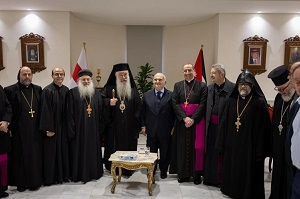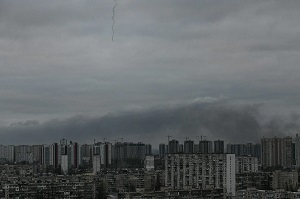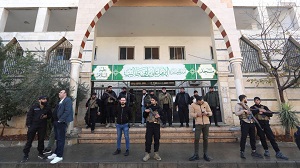Rula Samain , The Jordan Times
PETRA — The unexpected discovery in 1993 of 152 carbonised papyrus scrolls hidden within a church in the ancient city of Petra provided archaeologists with remarkable insight into the Byzantine era in the 6th century AD, but the scientists from an American centre in charge of the site’s renovation established that it was not an ordinary church, but rather a full-fledged cathedral.
A reconstruction process is under way based on this discovery, especially as excavations unearthed more “chambers” that used to be part of the cathedral. In fact, the discovery revealed that the Petra Church was the seat of the bishop at the time and was dedicated to the “Blessed and All-Holy Lady, the most Glorious Virgin Mary”.
Describing their discovery to The Jordan Times, Christopher Tuttle, the associate director of the American Centre of Oriental Research (ACOR), said: “It was during Christmas time when foreign archaeologists and experts were preparing to leave for the holiday. Necessity required that we shelter inside a room adjacent to the church: Archaeologists discovered a burned material — carbonised scrolls — written in Byzantine Greek.”
It seemed that the scrolls survived against all odds, making this discovery all the more remarkable.
According to Barbra Porter, director of ACOR, “the scrolls survived the fire that took place in 600AD and caused the papyri to carbonise, and, ironically, be preserved; but it caused damage to parts of the mosaic floor”. Porter added that Petra’s location in a desert region is detrimental to the preservation of organic material. The fragile state of the scrolls meant that they could not be transported out of the Kingdom and thus their examination was conducted at ACOR in Jordan.
This unearthing can be considered as an archaeological breakthrough, with Porter declaring this set of papyrus scrolls as among the most important documentations of antiquity found outside of Egypt. Tuttle told The Jordan Times that the scrolls comprise the “family archive of Theodoros, a member of the church elite”, providing Byzantine legal records regarding the “registration of property sales, transfers of taxes”, as well as listing the “Greek, Latin and Nabataean names of Petra’s inhabitants”, almost three century after the Romans destroyed this unique Arab civilisation. The scrolls unveil social, economic and legal details of life in sixth century Petra, providing a rich and unique window into the era.
The Petra Church, located just a few hundred metres from the Colonnaded Street and the Temple of the Winged Lions, was already an intriguing archaeological site and an important Christian monument. Porter said that it was first discovered in 1990 by the archaeologist Kenneth Russell. The excavation project was inaugurated by Her Majesty Queen Noor eight years later. After Russell’s death in 1992, excavations were taken over by ACOR whose experts subsequently uncovered two more churches, the Blue Chapel and the Ridge Church, on the same hillside.
The on-site project director, Elena Ronza, detailed some of the more interesting features of the Petra Church. It was built over Nabataean and Roman remains approximately in 450AD and is today a pilgrimage site. Christians gather there for mass, walking across the geometric patterns of marble and stone that carpet the church’s nave (central hall) to pray amidst the preserved mosaics. Making up a huge 70 square metres, these mosaics pave each of the side aisles and represent personifications of the seasons, the ocean, the earth and wisdom.
Latest News
-
 Netanyahu to Meet Trump in US on Monday for Talks on Iran, Gaza, Hezbollah, Syria
Netanyahu to Meet Trump in US on Monday for Talks on Iran, Gaza, Hezbollah, Syria
-
 JMD forecasts heavy rain, brisk winds, low visibility
JMD forecasts heavy rain, brisk winds, low visibility
-
 Prince Hassan congratulates Christians on Christmas
Prince Hassan congratulates Christians on Christmas
-
 Zelensky says Kyiv attack shows Russia does 'not want to end the war'
Zelensky says Kyiv attack shows Russia does 'not want to end the war'
-
 Same group behind Damascus church attack bombs Homs mosque
Same group behind Damascus church attack bombs Homs mosque